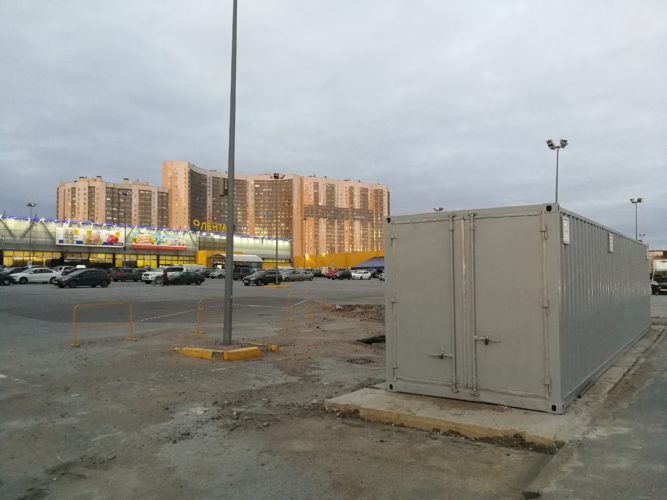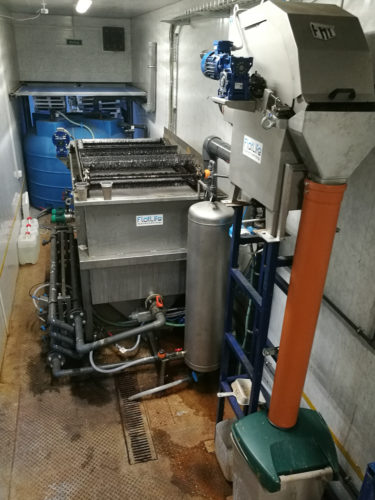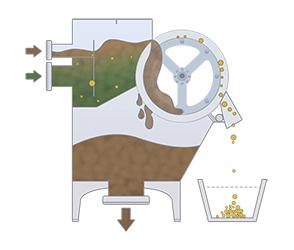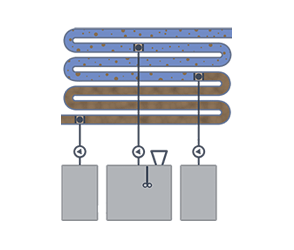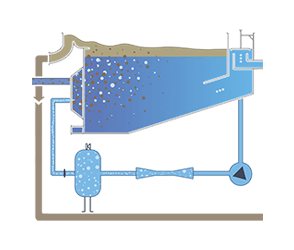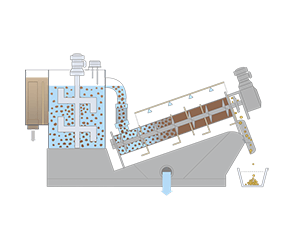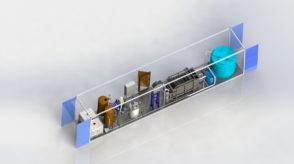Wastewater from shopping centers may contain very wide range of content including typical for retail outlets dealing with washing and preparation of fresh food, meats, and fish before shelving as well as waste from sanitary facilities, cleaning of premises and even landscape irrigation. One of the most critical sources wastewater generation in a shopping center is food court producing highly contaminated wastewater containing grease, fats, food wastes, sugar, proteins, salt, etc. Treated wastewater must be drained into the municipal sewage system or discharged into receiving waters (river, lake or sea) without any surcharges and in compliance with ecological sustainability requirements. Specifics of shopping centers is that they also have various water conservation opportunities, e.g. the water used to cool the refrigeration systems (storage and shop coolers and freezers).
For shopping centers, decentralised water treatment is the most economically justified solution because it allows to have full control over the entire process of wastewater treatment in order to make wastewater dischargeable into municipal sewers or receiving waters.
The wastewater treatment system for a shopping center can be delivered as a pre-assembled containerised plant or it can be assembled and installed in specially built premises.
FlotLife supplies shopping centers with equipment and technology for full wastewater treatment process flow and customises it to specific requirements of the customer. The system is fully automated for remote monitoring and control via a desktop computer or a mobile device.
Although specifics may vary depending on many factors (e.g. water characteristics, retailer type, size etc.), the general process flow for shopping center wastewater treatment is following:
- Wastewater from shopping centers contains a very wide buffet of solid waste that are removed by a rotary screen filter drum.
- Pre-treated wastewater is collected in a balance tank for intermediate storage to equalize its flow and freight.
- The balanced flow is forwarded through a flocculation pipe where it is chemically conditioned (coagulated, flocculated and/or neutralized) and then pumped to dissolved air flotation (DAF) facility.
- DAF further clarifies wastewater by the removal of suspended matter through atmospheric pressure. After DAF, the treated effluent can be drained into municipal sewing system.
- The DAF effluent still contains COD and BOD freight which must pass biological treatment before being released to environment. Biologically treated effluent is of outstanding quality and can be directly discharged into receiving waters (river, lake, sea) or recycled as process water.
- Activated waste sludge from all stages where it is formed is collected, blended and fed to the sludge dewatering press where the excess liquid is separated from the thickened waste. The dewatered sludge can be used for biogas production.
Lenta is one of the largest retail chains in Russia and the country's second largest hypermarket chain: it operates 190 hypermarkets in 77 cities across Russia and 47 supermarkets in the Moscow, St. Petersburg and the Central region of Russia. For its complete wastewater treatment system, Lenta supermarket in St. Petersburg is running a containerized wastewater treatment plant supplied by FlotLife.
- Type of wastewaterFood processing, toilets and restaurant
- DischargeMunicipal network
- Flow100m3/day
| Inlet, mg/l | Outlet, mg/l | |
| TSS | 300-1000 | 50 |
| F.O.G. | 100–800 | 50 |
| COD | 900–3200 | 500 |
| BOD | 500–1600 | 300 |
